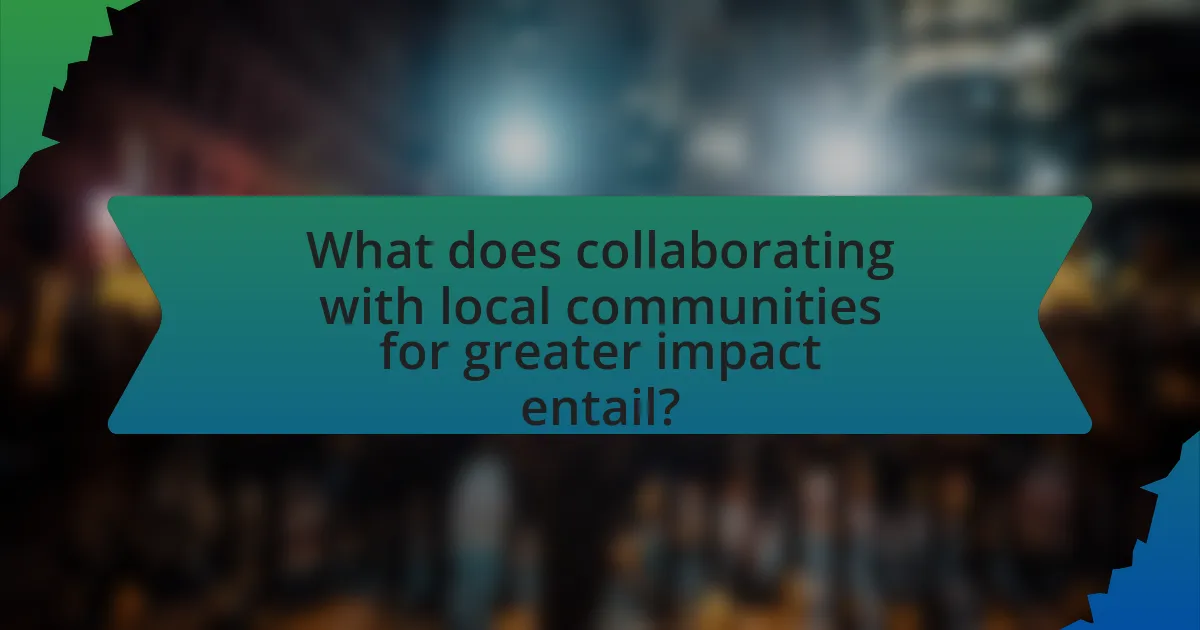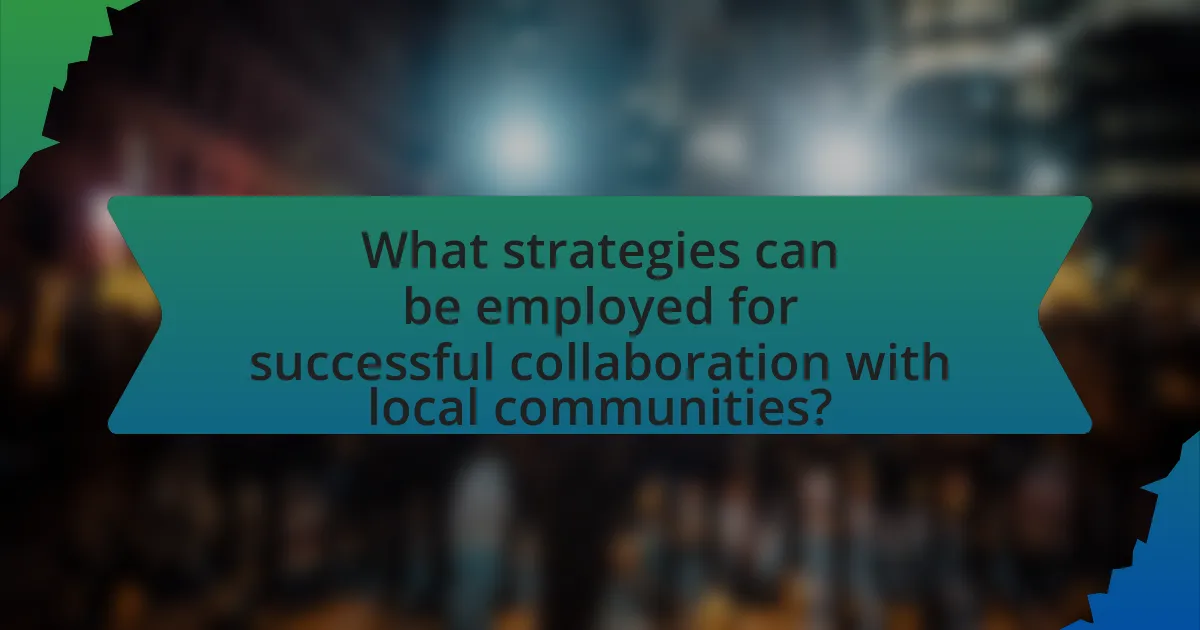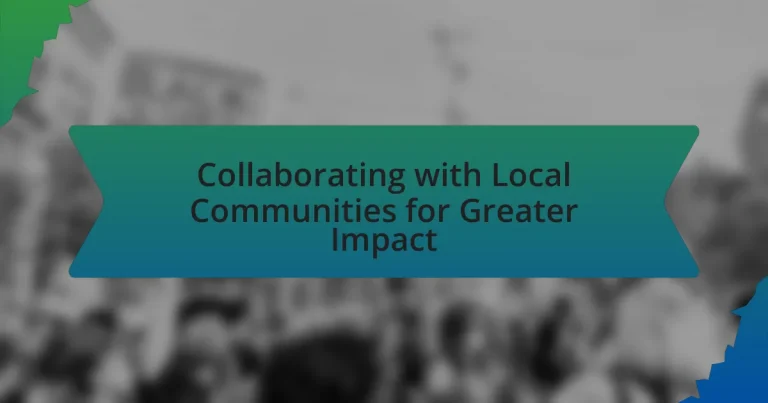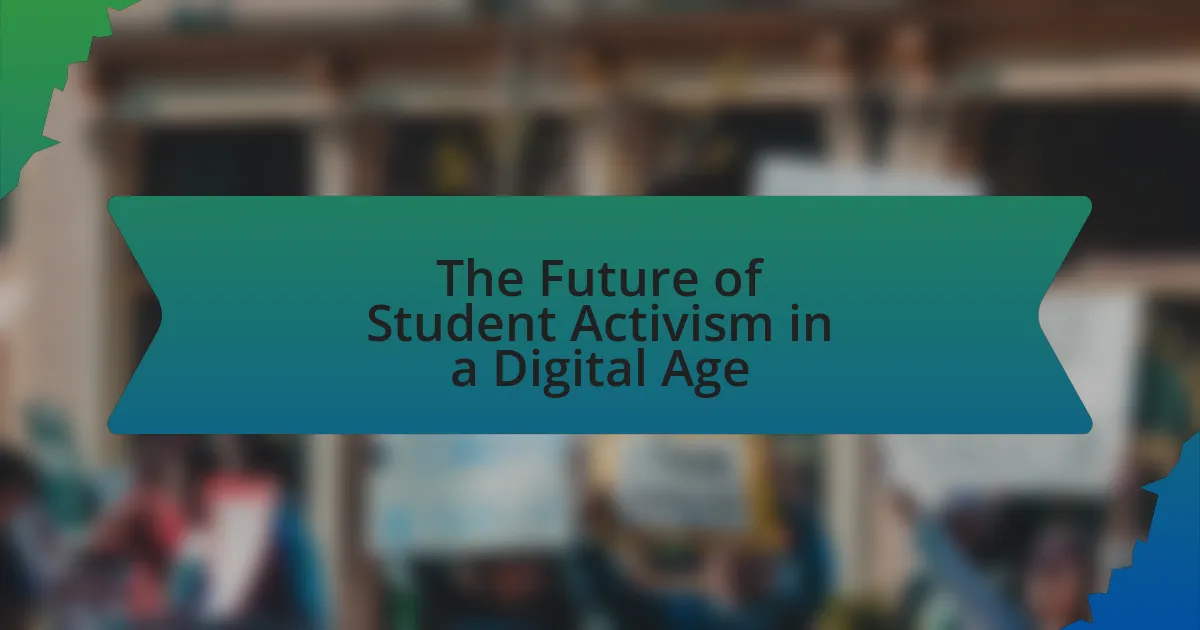Collaborating with local communities for greater impact involves engaging community members to identify their needs and strengths, leading to mutually beneficial projects that are culturally relevant and sustainable. Research indicates that community-driven approaches significantly enhance project outcomes, with initiatives that incorporate local insights being more likely to succeed. Key principles of effective collaboration include shared goals, mutual respect, open communication, inclusivity, and sustainability. Challenges such as communication barriers and differing priorities can arise, but strategies like building trust and employing participatory approaches can mitigate these issues, ultimately fostering stronger community relationships and more impactful initiatives.

What does collaborating with local communities for greater impact entail?
Collaborating with local communities for greater impact entails engaging with community members to identify their needs, resources, and strengths, thereby fostering mutual benefits. This collaboration often involves co-developing projects that align with local priorities, ensuring that initiatives are culturally relevant and sustainable. Evidence shows that community-driven approaches lead to higher success rates; for instance, a study by the World Bank found that projects involving local participation are 20% more likely to be successful in achieving their goals compared to top-down approaches.
How can collaboration with local communities enhance project outcomes?
Collaboration with local communities enhances project outcomes by ensuring that initiatives are tailored to the specific needs and contexts of those communities. Engaging local stakeholders leads to increased relevance and acceptance of projects, which can result in higher participation rates and better sustainability. For instance, a study by the World Bank found that projects involving community participation are 20% more likely to succeed compared to those that do not engage local populations. This success is attributed to the incorporation of local knowledge, resources, and networks, which can significantly improve project design and implementation.
What are the key principles of effective community collaboration?
The key principles of effective community collaboration include shared goals, mutual respect, open communication, inclusivity, and sustainability. Shared goals ensure that all stakeholders work towards a common purpose, fostering unity and direction. Mutual respect among participants builds trust and encourages diverse perspectives, which enhances problem-solving. Open communication facilitates transparency and allows for the exchange of ideas, ensuring that all voices are heard. Inclusivity ensures that all community members, especially marginalized groups, are engaged in the process, leading to more equitable outcomes. Lastly, sustainability focuses on creating lasting impacts and maintaining relationships beyond initial projects, which is essential for long-term success. These principles are supported by research indicating that collaborative efforts that adhere to these guidelines yield more effective and impactful community initiatives.
How does community involvement influence project sustainability?
Community involvement significantly enhances project sustainability by fostering local ownership and ensuring that initiatives align with the needs and values of the community. When community members actively participate in project planning and implementation, they are more likely to support and maintain the project over time. Research indicates that projects with strong community engagement have a 30% higher success rate in achieving long-term sustainability compared to those without such involvement. This is evidenced by case studies where local stakeholders contributed to decision-making processes, leading to tailored solutions that resonate with community priorities, thereby increasing the likelihood of continued support and resource allocation.
Why is it important to engage local communities in decision-making?
Engaging local communities in decision-making is crucial because it ensures that the needs and perspectives of those directly affected by policies and initiatives are considered. This involvement leads to more relevant and effective solutions, as local communities possess unique insights and knowledge about their circumstances. Research indicates that when communities are actively involved, projects are more likely to succeed; for instance, a study published in the Journal of Community Development found that community engagement increases project sustainability by 30%. Therefore, integrating local voices not only enhances the quality of decisions but also fosters trust and collaboration between stakeholders.
What are the benefits of local insights in project planning?
Local insights in project planning enhance decision-making by providing context-specific knowledge that aligns with community needs. This localized understanding allows project managers to tailor initiatives effectively, ensuring relevance and increasing the likelihood of success. For instance, a study by the World Bank found that projects incorporating local stakeholder input are 30% more likely to meet their objectives, demonstrating the tangible benefits of integrating local perspectives into planning processes.
How can local knowledge improve project relevance and effectiveness?
Local knowledge enhances project relevance and effectiveness by ensuring that initiatives are tailored to the specific needs and cultural contexts of the community. When project planners incorporate insights from local residents, they can identify priority issues, appropriate solutions, and potential barriers that external stakeholders might overlook. For instance, a study by the World Bank found that projects that engaged local communities in the planning process were 30% more likely to succeed in achieving their objectives compared to those that did not. This demonstrates that leveraging local expertise not only aligns projects with community expectations but also fosters greater ownership and sustainability, ultimately leading to more impactful outcomes.

What strategies can be employed for successful collaboration with local communities?
Successful collaboration with local communities can be achieved through strategies such as building trust, engaging in open communication, and fostering mutual respect. Building trust involves establishing long-term relationships and demonstrating commitment to community needs, which can be supported by initiatives like consistent follow-ups and transparency in decision-making. Open communication ensures that community members feel heard and valued, which can be facilitated through regular meetings and feedback mechanisms. Fostering mutual respect requires acknowledging the community’s knowledge and culture, which can be reinforced by involving local leaders in planning and implementation processes. These strategies are effective as they create a foundation for sustainable partnerships, ultimately leading to greater community impact.
How can organizations build trust with local communities?
Organizations can build trust with local communities by engaging in transparent communication and demonstrating consistent, positive actions. Establishing open lines of communication allows organizations to share their goals, listen to community concerns, and address issues promptly. For instance, a study by the Stanford Social Innovation Review highlights that organizations that actively involve community members in decision-making processes foster greater trust and collaboration. Additionally, organizations should commit to social responsibility initiatives that align with community needs, such as supporting local education or health programs, which can further solidify their reputation and reliability within the community.
What role does transparency play in fostering community relationships?
Transparency plays a crucial role in fostering community relationships by building trust and encouraging open communication. When organizations and community leaders share information openly, it reduces misunderstandings and promotes a sense of inclusion among community members. For instance, a study by the International Association for Public Participation found that transparency in decision-making processes leads to higher levels of community engagement and satisfaction. This demonstrates that when communities feel informed and involved, they are more likely to collaborate effectively, leading to stronger relationships and collective action.
How can organizations demonstrate commitment to community needs?
Organizations can demonstrate commitment to community needs by actively engaging in local initiatives and addressing specific challenges faced by the community. This can include conducting needs assessments to identify pressing issues, collaborating with local stakeholders, and allocating resources to support community-driven projects. For instance, a study by the Stanford Social Innovation Review highlights that organizations that invest in local partnerships and tailor their programs to community feedback see a 30% increase in program effectiveness. By prioritizing transparency and accountability in their efforts, organizations can build trust and foster long-term relationships with community members, further solidifying their commitment.
What methods can be used to facilitate community engagement?
To facilitate community engagement, methods such as participatory planning, community workshops, and digital platforms can be employed. Participatory planning involves actively involving community members in decision-making processes, ensuring their voices are heard and valued. Community workshops provide a space for dialogue, allowing residents to share their ideas and concerns, fostering a sense of ownership and collaboration. Digital platforms, including social media and community forums, enable broader outreach and engagement, allowing for real-time feedback and interaction. These methods have been shown to enhance trust and cooperation between organizations and community members, ultimately leading to more effective and sustainable outcomes in community initiatives.
How can participatory approaches enhance community involvement?
Participatory approaches enhance community involvement by actively engaging community members in decision-making processes. This engagement fosters a sense of ownership and responsibility among participants, leading to increased motivation and commitment to community initiatives. Research indicates that when individuals are involved in shaping policies or programs that affect their lives, they are more likely to support and sustain those initiatives. For example, a study by the World Bank found that participatory governance can improve service delivery and community satisfaction, as it aligns projects with the actual needs and preferences of the community.
What tools and platforms can support effective communication with communities?
Effective communication with communities can be supported by tools and platforms such as social media, community forums, messaging apps, and project management software. Social media platforms like Facebook and Twitter facilitate real-time engagement and information sharing, while community forums such as Reddit or Nextdoor allow for localized discussions and feedback. Messaging apps like WhatsApp and Telegram enable direct communication and group coordination, enhancing community interaction. Project management software like Trello or Asana helps organize community initiatives and track progress, ensuring transparency and collaboration. These tools collectively enhance outreach, foster dialogue, and streamline project execution within communities.

What challenges might arise when collaborating with local communities?
Challenges that might arise when collaborating with local communities include communication barriers, differing priorities, and trust issues. Communication barriers can stem from language differences or varying levels of literacy, which hinder effective dialogue and understanding. Differing priorities may arise when the goals of external organizations do not align with the needs or desires of the community, leading to conflicts or disengagement. Trust issues often develop due to past negative experiences with outside entities, making community members hesitant to engage fully. These challenges can significantly impact the success of collaborative efforts, as evidenced by studies showing that successful community engagement requires addressing these barriers proactively.
How can cultural differences impact collaboration efforts?
Cultural differences can significantly impact collaboration efforts by influencing communication styles, decision-making processes, and conflict resolution approaches. For instance, in cultures that prioritize collectivism, group consensus may be essential before making decisions, while individualistic cultures may favor quick, unilateral decision-making. This divergence can lead to misunderstandings and frustration among team members. Research by Hofstede’s Dimensions of Culture indicates that variations in power distance, uncertainty avoidance, and individualism versus collectivism can create barriers to effective collaboration. These cultural dimensions shape how individuals perceive authority, risk, and teamwork, ultimately affecting the success of collaborative initiatives.
What strategies can mitigate misunderstandings due to cultural diversity?
To mitigate misunderstandings due to cultural diversity, organizations can implement strategies such as cultural competence training, active listening, and inclusive communication practices. Cultural competence training equips individuals with the knowledge and skills to understand and respect different cultural perspectives, which has been shown to reduce conflicts and enhance collaboration in diverse teams. Active listening fosters an environment where individuals feel heard and valued, thereby minimizing misinterpretations. Inclusive communication practices, such as using clear language and avoiding jargon, ensure that messages are accessible to all cultural backgrounds, further decreasing the likelihood of misunderstandings. These strategies are supported by research indicating that effective communication and understanding are crucial for successful collaboration in culturally diverse settings.
How can organizations respect local customs while pursuing their goals?
Organizations can respect local customs while pursuing their goals by actively engaging with community leaders and stakeholders to understand cultural norms and values. This approach ensures that organizational strategies align with local traditions, fostering trust and collaboration. For instance, companies like Unilever have successfully adapted their marketing strategies to reflect local customs, which has led to increased acceptance and brand loyalty in diverse markets. By prioritizing cultural sensitivity and incorporating local feedback into decision-making processes, organizations can achieve their objectives without compromising the integrity of the communities they operate in.
What are common barriers to effective community collaboration?
Common barriers to effective community collaboration include lack of trust, insufficient communication, and differing priorities among stakeholders. Lack of trust can hinder open dialogue and cooperation, as community members may be skeptical of each other’s intentions. Insufficient communication often leads to misunderstandings and misalignment of goals, making it difficult to work together effectively. Differing priorities among stakeholders can create conflicts, as each group may focus on its own objectives rather than a shared vision. These barriers are supported by research indicating that trust and communication are critical components of successful collaboration, as highlighted in studies on community engagement and partnership effectiveness.
How can resource limitations affect collaboration initiatives?
Resource limitations can significantly hinder collaboration initiatives by restricting access to necessary tools, personnel, and funding. When organizations face budget constraints, they may lack the financial resources to invest in collaborative technologies or to compensate team members adequately, which can lead to decreased motivation and engagement. A study by the Stanford Social Innovation Review found that 70% of nonprofit organizations reported that limited resources directly impacted their ability to collaborate effectively, resulting in fragmented efforts and reduced overall impact. This evidence illustrates that without sufficient resources, collaboration initiatives may struggle to achieve their goals and foster meaningful partnerships within local communities.
What approaches can address resistance from community members?
Engaging community members through transparent communication and active participation can effectively address resistance. By fostering open dialogue, stakeholders can understand community concerns and incorporate feedback into decision-making processes. Research indicates that projects involving community input are 30% more likely to succeed, as seen in the case of the Community-Based Participatory Research model, which emphasizes collaboration and shared power between researchers and community members. This approach not only builds trust but also empowers residents, leading to greater acceptance and support for initiatives.
What best practices can enhance collaboration with local communities?
Establishing trust and open communication are best practices that can enhance collaboration with local communities. Trust fosters a sense of partnership, encouraging community members to engage actively in initiatives. Open communication ensures that community needs and concerns are heard and addressed, leading to more effective collaboration. Research by the International Association for Public Participation indicates that projects involving community input are 30% more likely to succeed, highlighting the importance of these practices in achieving impactful outcomes.
How can continuous feedback loops improve collaboration outcomes?
Continuous feedback loops enhance collaboration outcomes by fostering open communication and adaptability among team members. These loops allow for real-time input and adjustments, which can lead to more effective problem-solving and innovation. Research indicates that organizations implementing continuous feedback mechanisms experience a 14.9% increase in productivity, as teams can quickly address issues and refine strategies based on collective insights. This iterative process not only strengthens relationships but also aligns goals, ultimately driving greater impact in community collaborations.
What role does capacity building play in empowering local communities?
Capacity building plays a crucial role in empowering local communities by enhancing their skills, knowledge, and resources to effectively address their own challenges. This process enables communities to become self-sufficient and fosters resilience, allowing them to participate actively in decision-making and development initiatives. For instance, programs that provide training in leadership, project management, and financial literacy have been shown to increase community engagement and improve local governance. Research indicates that communities with strong capacity-building initiatives are more likely to achieve sustainable development outcomes, as evidenced by a study published in the Journal of Community Development, which found that capacity-building efforts led to a 30% increase in community-led projects in participating areas.




